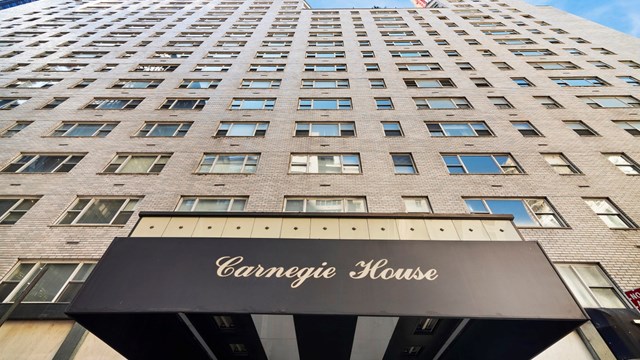By their nature, co-ops and condos are about ownership, common interests and camaraderie. They are also predicated upon the sharing of costs–both of the day-to-day maintenance of the property, as well as periodic capital expenditures. As with any other home, at some point in time there will be a need for major repairs and replacements.
While most co-ops and condos prepare an annual budget, these tend to address only the normal operating costs of the building, often neglecting plans for future repairs and replacements. There are many physical components of a building–the roof, elevator, heating and/or air conditioning system, façade, electrical wiring and windows–which ultimately will need significant repair or replacement. A long-term capital budget should be employed to itemize the anticipated need and the costs of future capital expenditures, as well as to develop a plan to fund these inevitable and significant projects. This capital budget should also be prepared and updated on an annual basis.
While the major purpose of this exercise is to ensure that all owners are aware of the need for long-term financial planning, it also supports the popular concept of charging the current occupants for their proportionate usage of each component. Let’s use the roof as an example. If it is expected to last for 20 years and costs $100,000 to replace, then an annual provision of $5,000 for roof replacement should be included in the budget so that each owner will currently fund his or her proportionate share of the annual wear and tear. Managers and accountants should explore this concept with all new clients.
Most buildings don’t have sufficient reserves to cover the cost of all of the major repairs and replacements that arise, nor a plan to provide the necessary funding. In the rising real estate market, it has been easy for co-ops to raise funds through mortgage refinancing or by establishing a line of credit and–fortunately, for many–at historically low interest rates. Since these options are not generally available to condos, and as the market may be softening, let’s explore the two options that are always available: a special assessment and/or maintenance increase.
Breaking It Down
Prospective buyers generally do not like to see assessments, as they are concerned that the assessments may not end. I myself am usually more concerned about the assessment that you might not see coming as opposed to the one you can quantify.
Ultimately, prospective buyers need to verify that a sufficient and planned annual contribution is being made to the reserves in order to resolve their concerns about future assessments. Conversely, many owners are afraid that any maintenance increase that would cause the total monthly charges to exceed those of similar buildings in the neighborhood would decrease the market value of their units. As all of us–especially board members–know, it is never easy to convince owners to reach deeper into their pockets, and no matter which payment plan you opt for, you will never please everyone.
As a basic rule of thumb, assessments are used when there is a more immediate need to raise a substantial amount of funds, while a maintenance increase is used to provide a steady contribution to reserves and to fund projects in the distant future. Whether you choose to levy an assessment, to increase maintenance charges, or a combination of the two–and regardless of the connotations that go along with each–the most important tool for allaying the fears of both owners and buyers to have an established and viable plan for the future. This will stabilize the value of each unit.
Assessments: The Basics
A special assessment can be imposed in a variety of ways. A one-time lump-sum assessment is a burden on anyone, and should be used as a last resort. That said, such assessments are typically used when imminent capital expenditures (a leaking roof, a malfunctioning furnace or boiler) make it necessary to raise funds quickly. If time allows, even this type of assessment should be levied as early as possible before the work is to commence, as some owners will not pay promptly. A better alternative would be to spread the burden of an assessment over several months–or even years. While initially it may not appear possible to delay collecting the full assessment if the work to be funded needs to be started immediately, this may be accomplished with the use of short-term financing.
Unsecured loans are available to both condos and co-ops, based upon their ability to repay the loan either through operations or by collecting a specific periodic assessment. The loan interest will increase the cost of the project, but may still be more palatable to owners than a large assessment up-front. In some instances, obtaining a loan is the only way it’s affordable. On the plus side, these loans are generally based upon short-term interest rates, which are at historically low levels.
However, be aware that most of these are variable-rate loans that usually adjust monthly, so there is an element of risk as well as the uncertainty of not knowing what the final financing cost will be until the loan is repaid.
While some buildings choose to levy an assessment to defray the cost of a current capital project so as not to deplete their current reserves, if these reserves are ample, the building may in essence provide their own short-term financing. A portion of the reserve fund could be used to finance the initial costs of the project, and later be reimbursed as assessment collections allow.
How You Figure It
When determining how much to assess on a monthly basis over-and-above the regular monthly maintenance (or common charges), your board needs to stay sensitive to any financial disparities among owners that could affect their ability to pay. More importantly, with all the options available (and with proper planning), it is not in anyone’s best interest to put an owner in otherwise good standing in such a horrible position. A hybrid approach would be to impose the monthly assessment, but with a discount for paying up-front. This is especially useful in buildings which have owners of varying financial means, or when only some of the funding is needed immediately. In order for this method to work, the discount has to be sufficient to provide a rate of return greater than what would be earned if the funds were left in a money-market account.
But What If They Don’t Like It?
I attend many co-op and condo meetings over the course of the year, and hear points of view from scores of people. The most common reason owners get angry is not an increase in out-of-pocket costs, but a lack of communication. Though the board has the authority to make most decisions, unit owners want to be involved at some level in the important decisions. An owner’s apartment is generally their most significant asset, so when it appears that a special assessment will be necessary, try to give residents some notice and a chance to absorb the news. Put a blurb in the building’s newsletter that an unexpected project is on the horizon. Call an informal meeting to explain the project, the process for selecting the contractor(s), how the job is to be supervised, etc. Consider establishing a capital budget committee–which can be made up of non-board members–to not only handle this process, but to oversee these projects, and plan for future needs and requisite funding.
The Other Option
Owners are generally more receptive to small maintenance increases over the years that keep pace with any rising costs than to many years of flat charges that prompt a very large percentage increase. As previously mentioned, before enacting a maintenance increase, you should investigate how the monthly maintenance per unit in your building compares to others in the neighborhood. Experienced realtors generally can tell you this off the top of their heads. You may even discover there is more room than you thought to raise the monthly maintenance charges–this in lieu of an assessment–without pricing the building out of the market. As your operational budget is probably already balanced, you will need to add an expense line item such as "major repairs and replacements," "reserve fund" or "long-term capital fund," to offset this increase. These additional funds need to be transferred each month into a specific account, such as a reserve fund. When funds are needed for capital projects, they can be withdrawn from this account.
The Internal Revenue Service has indicated that these additional amounts, when properly documented, are considered capital contributions by the owners. As such, these amounts would be added to each owner’s purchase-price basis of their units, which is used in determining any gain on sale, and would not be included in the taxable income of the cooperative or condominium. But bear in mind that the building will need to support this line item with a long-term capital budget, indicating how it plans to use these funds, in order for the item to be considered a capital contribution.
Here’s Where You Come In
Now that you know the basic merits and purposes of special assessments and maintenance increases, along with the inherent concerns each provokes, you should be in a better position to either choose between or combine the two. I am sure many of you are still thinking that with all the various options, it is still not a clear-cut decision–how do you really know what amounts need to be raised? This obviously gets into more complicated issues, and is somewhat beyond the immediate scope of this article. But, rather than leave you hanging, the following may give you an idea of what your basic parameters should be.
Your end result should be that after you have provided for all known contingencies, the building’s reserve funds have reached their targeted balance to adequately protect against the unknown. The best way to analyze and estimate what will be needed to cover the cost of future contingencies–while providing a cushion for the unforeseen–is to prepare and continually maintain a long-term capital budget. As co-ops and condos rely on owners who voluntarily serve as board members, many of these will not feel properly equipped to develop a long-term strategy for their building, no matter how many articles they read. While I certainly encourage all readers to take any opportunity to learn more about long-term capital budgets, this may be a new area for many of you. Don’t forget that there are other resources available to assist you. By utilizing a superior managing agent and a team of professionals specializing in co-ops and condos, you have the opportunity to establish policies that will assure the long-term financial health of your building.
Mr. Beer is a partner with Manhattan accounting firm Czarnowski & Beer. This is the first of a two-part series on budgeting to be authored by Mr. Beer.







Leave a Comment